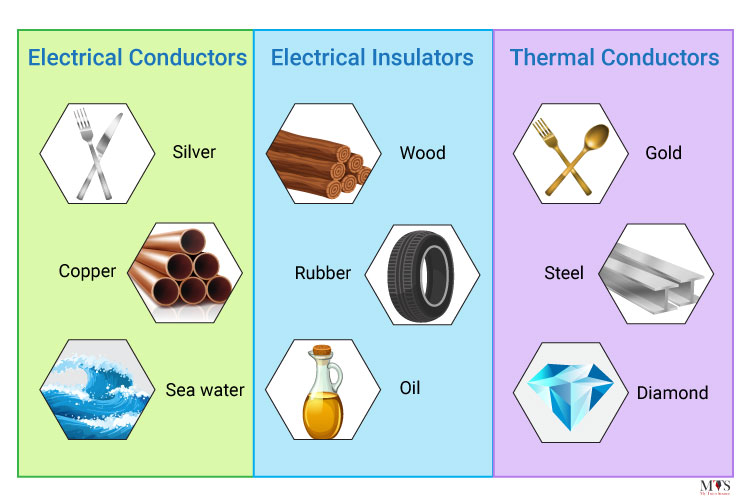📘 Class 6 : Chapter - 4 || Sorting Materials into Groups
The chapter “Sorting Materials into Groups” helps students understand how and why we group different materials based on their properties. It explains features like appearance, hardness, solubility, and transparency to classify materials. This chapter makes it easier to study and compare materials by sorting them into meaningful groups.
📖 Introduction :
We see many things around us made of different materials like wood, metal, glass, and plastic. In this chapter, we learn how to group these materials based on their properties like how they look, feel, or behave in water. Grouping helps us understand and compare materials better.
🗂️ Key Points:
We group materials to study them easily.
Materials are sorted based on:
✨ Appearance – shiny or dull
🪵 Hardness – hard or soft
💧 Solubility – dissolves in water or not
☁️ Float or Sink – in water
🔍 Transparency – see-through or not (transparent, translucent, opaque)
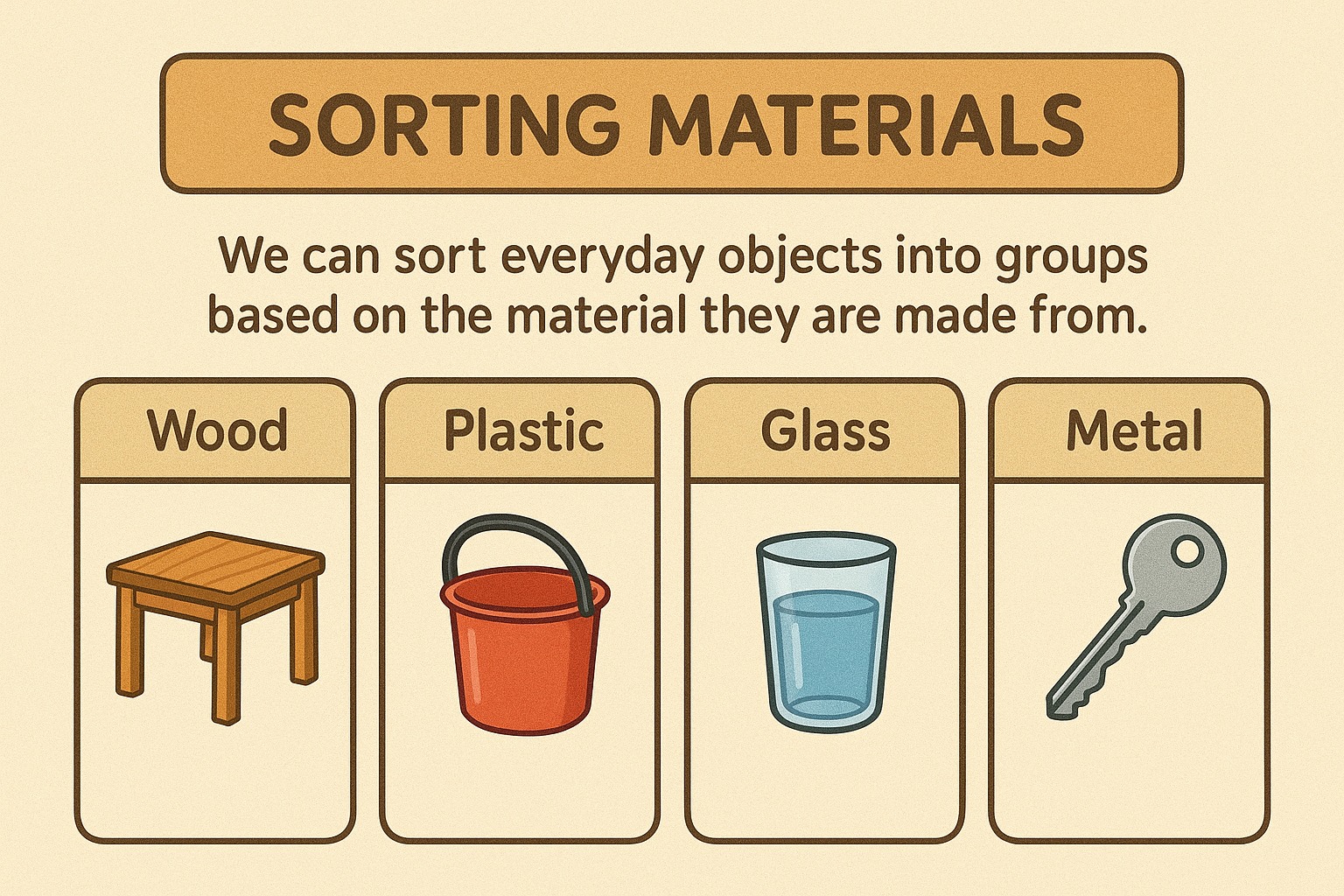
🧱 Objects Around Us
The world around us is full of different objects—each made from various materials like wood, plastic, glass, metal, or fabric. These objects serve different purposes in our daily life, and the material used depends on the usefulness, availability, and nature of the material. Some objects are made from a single material, while others are made using a combination of materials.
Key Points:
🧩 Objects are made of materials:
Materials can be natural (like wood, cotton) or man-made (like plastic, glass).
🧃 Same material → different objects:
Example: Plastic is used for bottles, bags, and chairs.
🧱 Same object → different materials:
Example: Spoons can be made of plastic, steel, or wood.
🔄 Objects differ by use, shape, size, and material.
⚙️ Choosing materials:
Based on purpose, cost, strength, and availability.

🧪 Properties of Materials
Different materials have different physical properties that help us identify, compare, and choose them for specific uses. These properties include how they look, how hard or soft they are, whether they let light or heat pass through, whether they dissolve in water, or if they float or sink. Understanding these helps us decide which material is suitable for making a particular object.
Key Points:
👁️ Appearance:
Materials can be lustrous (shiny like metals) or dull (like wood or clay).
🧱 Hardness:
Hard materials do not get scratched easily (e.g., iron, glass).
Soft materials can be easily scratched or bent (e.g., cotton, rubber).
💧 Transparency:
Transparent: Clear, light passes through (e.g., glass).
Translucent: Partially see-through (e.g., butter paper).
Opaque: No light passes through (e.g., wood, metal).
🌊 Solubility in Water:
Soluble: Mixes/dissolves in water (e.g., sugar, salt).
Insoluble: Does not dissolve (e.g., sand, oil).
🧲 Floating and Sinking:
Some materials float (like plastic), others sink (like stone), based on density.
🌡️ Conduction of Heat:
Conductors allow heat to pass (e.g., metals).
Insulators block heat (e.g., wood, plastic).
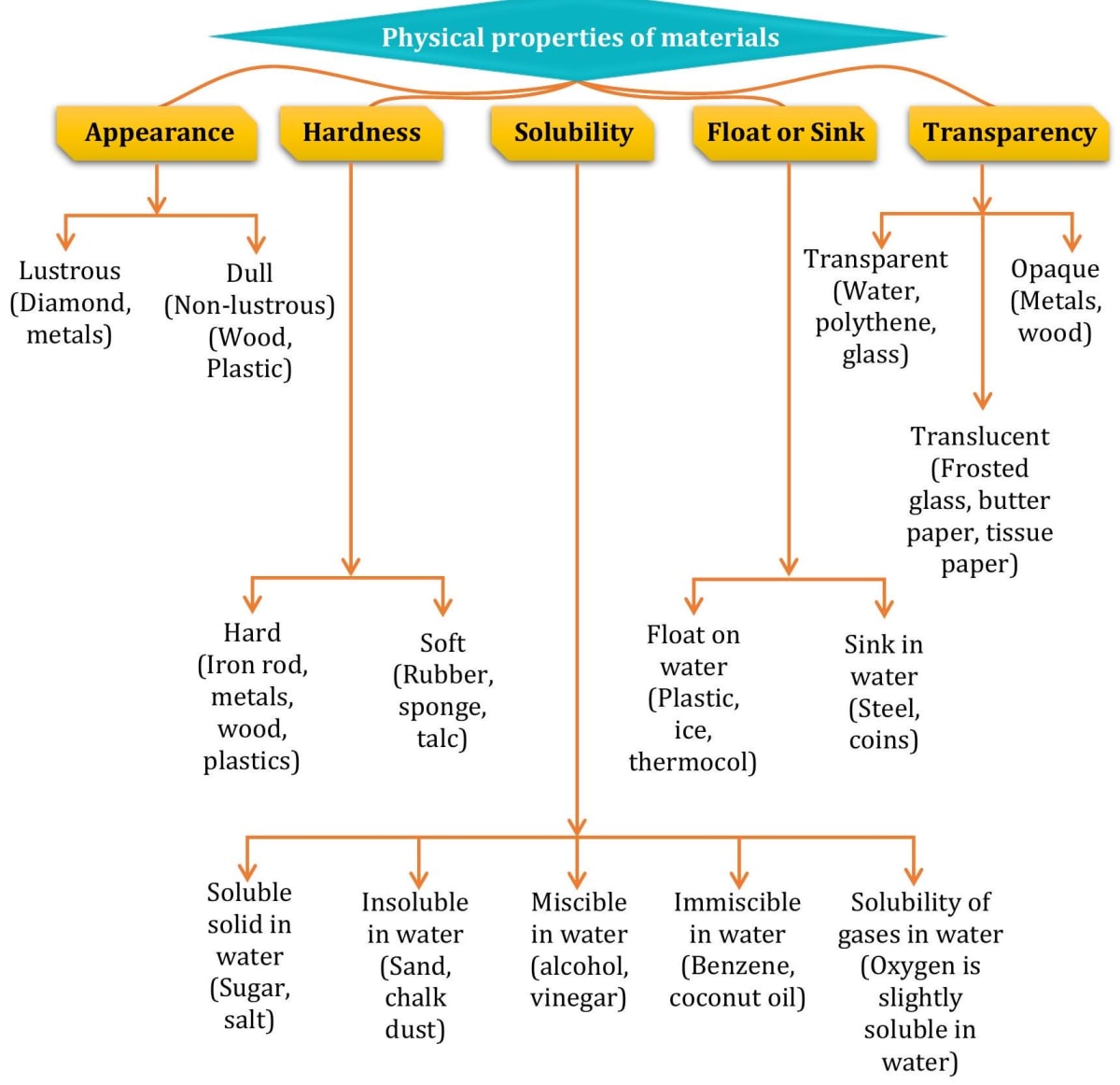
👁️ Appearance – Lustrous or Dull
Different materials look different from each other. Some materials have a shiny surface, while others look dull. This appearance helps us to identify and classify materials. Materials that shine are called lustrous, while those that do not shine are called dull. Lustre is an important property, especially in materials like metals and decorative items.
Key Points:
✨ Lustrous Materials:
Have a shiny surface.
Examples: Gold, silver, aluminium, copper.
Mostly metals are lustrous.
🌫️ Dull Materials:
Have a non-shiny, rough, or plain appearance.
Examples: Wood, chalk, cloth, plastic (some types).
🧽 Polishing can increase lustre in some dull metals.
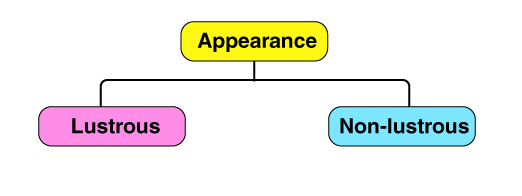
💧 Transparency – Types of Materials
Materials allow light to pass through them in different ways. Based on how much light they let through, materials are classified into transparent, translucent, and opaque. This property of transparency helps us decide how and where to use a material—like in windows, lamps, or walls.
Key Points:
🔍 Transparent Materials:
Allow light to pass completely through them.
Objects can be clearly seen through them.
Examples: Clear glass, clean water, air.
🌫️ Translucent Materials:
Allow some light to pass, but not clear images.
Objects appear blurry or unclear.
Examples: Frosted glass, butter paper, wax paper.
🚫 Opaque Materials:
Do not allow light to pass through.
You cannot see through them.
Examples: Wood, metal, cardboard, stone.
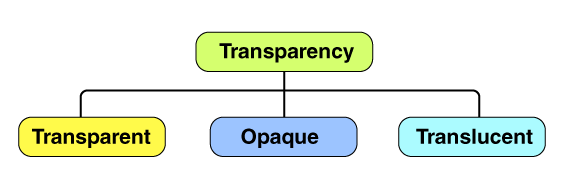
🔩 Hardness and Softness
Materials differ in how hard or soft they are. Hard materials are those that cannot be easily compressed, scratched, or broken. Soft materials can be easily pressed, bent, or scratched. This property helps us choose materials for specific purposes—like using hard materials for buildings and soft ones for cushions.
Key Points:
🪨 Hard Materials:
Difficult to scratch, cut, or bend.
Examples: Iron, glass, stone, steel.
Used in tools, buildings, machines.
🧸 Soft Materials:
Can be easily pressed, bent, or scratched.
Examples: Cotton, rubber, foam, clay.
Used in pillows, toys, cushions.
🧪 Simple test: Try pressing or scratching the material with a fingernail to feel its hardness or softness.
🌊 Solubility – Soluble and Insoluble Substances
Some substances dissolve in water, while others do not. This property is called solubility. Substances that completely dissolve in water are called soluble, and those that do not dissolve are called insoluble. Solubility helps us in making solutions like salt water or juice and is important in cooking, medicine, and cleaning.
Key Points:
💧 Soluble Substances:
Dissolve completely in water.
Examples: Salt, sugar, lemon juice, honey.
These form clear solutions.
🚫 Insoluble Substances:
Do not dissolve in water.
Examples: Sand, oil, chalk powder, sawdust.
They settle down or float.
🧪 Test for solubility:
Mix a small amount of the substance in water and stir.
If it disappears, it’s soluble; if not, it’s insoluble.

🧲 Floating and Sinking
Some objects float on water while others sink. This depends mainly on the density of the object compared to the density of water. If an object is lighter or less dense than water, it floats. If it is heavier or more dense, it sinks. Other factors like shape and material also affect whether an object floats or sinks. This concept helps us understand why boats float and stones sink.
Key Points:
🌊 Floating: When an object stays on the surface of water.
🪨 Sinking: When an object goes down and settles at the bottom.
⚖️ Density matters:
If object’s density < water → it floats
If object’s density > water → it sinks
🧱 Heavy objects can float if shaped properly (like ships).
🪶 Light materials like plastic or wood usually float.
🧪 This concept is used in designing ships, life jackets, and submarines.

🌡️ Conductors and Insulators of Heat
Heat travels through some materials easily, while it cannot pass through others. Materials that allow heat to pass through them quickly are called conductors of heat, like metals. Those that do not let heat pass easily are called insulators of heat, like wood or plastic. This concept is important in designing cooking tools, house insulation, and clothes for different weather.
Key Points:
🔥 Conductors of Heat:
Allow heat to pass through them.
Mostly metals like copper, iron, aluminium.
Used in cooking utensils, irons, and kettles.
❄️ Insulators of Heat:
Do not allow heat to pass easily.
Examples: wood, plastic, rubber, cloth.
Used in handles of utensils, flask covers, and winter clothes.
🧪 Experiment: When a metal spoon and a wooden stick are placed in hot water, the metal spoon gets hot quickly (conductor), while the wooden stick stays cool (insulator).
